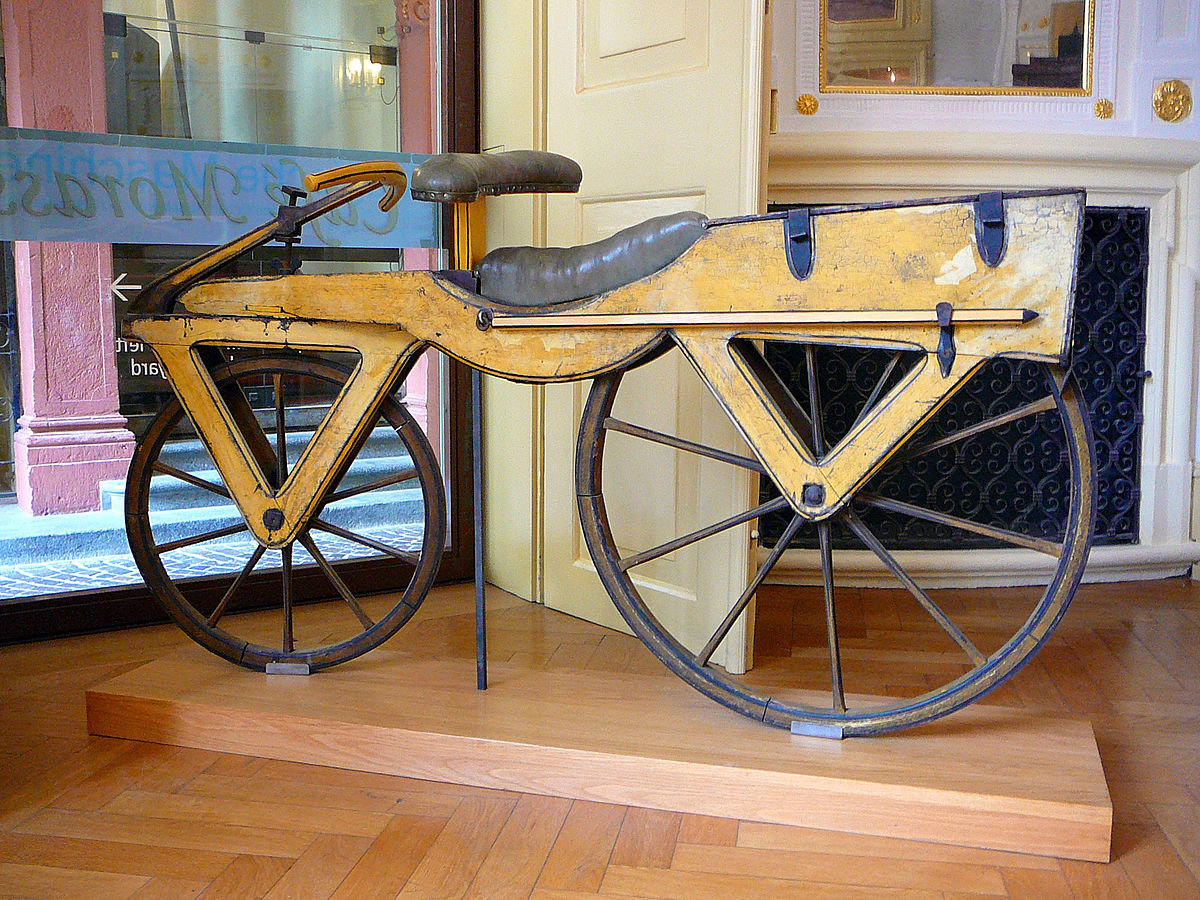With just a few weeks to go until the 2018 edition of the world’s most famous bike race, the Tour de France, cycling is more popular than it has been for decades.
New types of bikes, such as mountain bikes and ‘hybrids’, mean it’s now possible to cycle off the beaten track, while the latest fashion for electrically-assisted bikes is making cycling accessible to even more people. And it all started 201 years ago today, when onlookers were startled to see a German inventor out for the first test ride on his latest contraption.
 Karl Freiherr von Drais was a civil servant and, in his spare time, a prolific inventor, whose works included the earliest typewriter with a keyboard, an early stenograph machine, the first mechanical meat grinder, and a device to record piano music on paper. Yet he is best remembered for his “Laufmaschine” (running machine), which would also be variously called a velocipede, Draisine (after it inventor), hobby horse or dandy horse, and was the great granddaddy of all modern two-wheeled transport.
Karl Freiherr von Drais was a civil servant and, in his spare time, a prolific inventor, whose works included the earliest typewriter with a keyboard, an early stenograph machine, the first mechanical meat grinder, and a device to record piano music on paper. Yet he is best remembered for his “Laufmaschine” (running machine), which would also be variously called a velocipede, Draisine (after it inventor), hobby horse or dandy horse, and was the great granddaddy of all modern two-wheeled transport.
As its name suggested, his ‘running machine’ was foot-powered, with no engine or even pedals. Instead it had a frame, two wheels in line with each other, a saddle and a rudimentary steering ‘tiller’ for the front wheel. The rider sat astride the wooden frame on its saddle, leaning forward onto a padded support and, with his feet touching the floor, simply ran or walked to propel himself along. Braking was also achieved using the feet.
Compared to today’s high-end bicycles, equipped with multiple quickfire gears, carbon fibre frames and hydraulic disc brakes, it was all very basic. Yet in its day it was a revolution in personal transport, sometimes described as “the big bang” for horseless transportation.
On June 12th, 1817, the pioneering German set out to ride his Laufmaschine from Mannheim to the Schwetzinger Relaishaus, a nearby coaching inn, and home again, a round trip of just over four miles. He chose the route because it was the best surfaced road in his home district of Baden. Apart from a few minor teething troubles, later addressed by slight changes to his design, he judged the test run a resounding success.
It also caught the public imagination, with news of the invention soon spreading across much of Europe and a variety of enterprising manufacturers copying Drais’ basic design to make and market their own machines. At first they were made to measure for their owner’s leg length, until a French manufacturer added an adjustable height saddle. These early machines were not transport for the people, as the mass-produced bicycle would later become, but handmade playthings for wealthy young gentlemen, which led to their most popular name in Britain – the ‘dandy horse’.
The craze reached its peak in the summer of 1819, but would soon run into trouble. Riders discovered it was difficult to remain upright or steer easily on the roads, deeply-rutted by horse-drawn carts and carriages. Instead they took to the smooth pavements, where they were able to move much more quickly… causing hazard and alarm to unsuspecting pedestrians!
It led to the contraption being banned on public highways by many municipal authorities in Germany, Britain, the USA and even Calcutta, ending the craze almost overnight. Some enthusiasts persevered on private land, but, unable to impress the ladies by riding their dandy horse to town, many fashionable young gentlemen consigned them to gather dust in the stables, which is why a handful still survive in museums today.
One country that had a more relaxed attitude to the dangers of the ‘velocipede’ was France, which could explain why the next major step in the evolution of cycling happened there. Around the 1860s a number of manufacturers (each claiming the original idea) added rotary cranks and pedals to the front wheel, enabling the rider to move the machine along without touching the floor. Other innovations followed, ultimately leading to the bicycles of today, and France in particular has enjoyed a lasting love affair with the ‘velocipede’ and its sporting applications.
As for Herr von Drais, his radical views on politics saw him ostracised by the German authorities and he died penniless and largely forgotten in 1851. Only many years later would his various pioneering achievements be fully recognised. The term “Draisine” is still in use today, not for his rudimentary bicycle, but for a human-powered railroad maintenance vehicle which he also invented.
